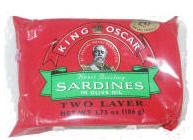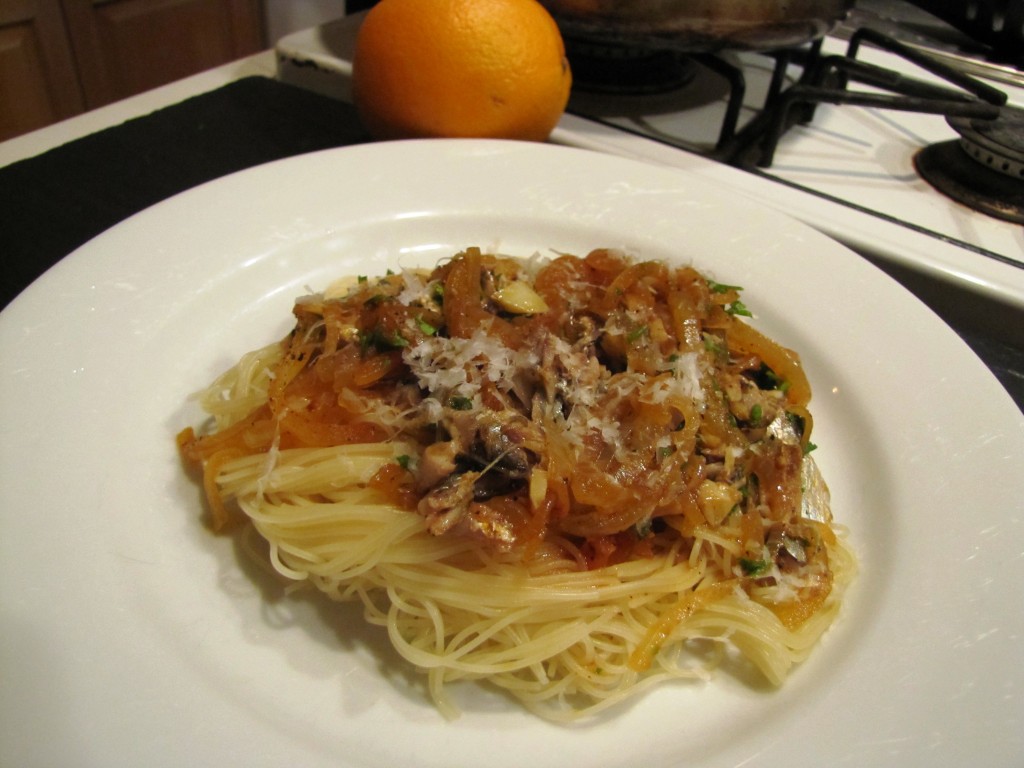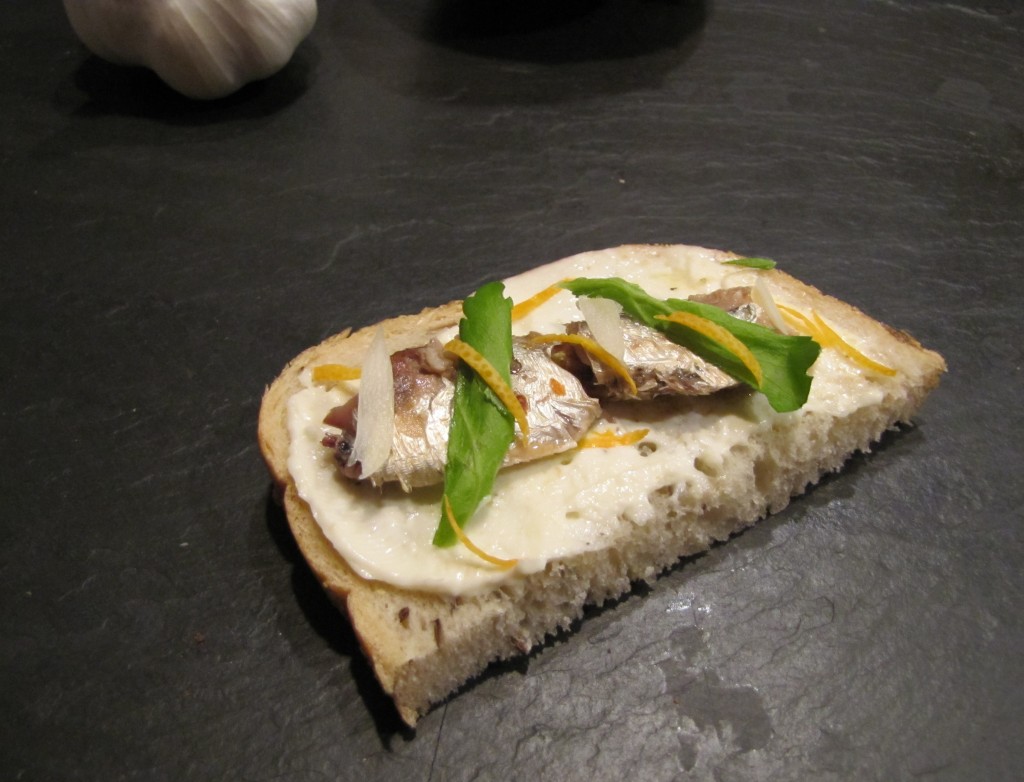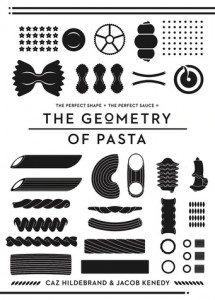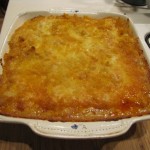
It’s really easy to complexify things. Over the past few decades, we’ve seen the expertization of everything from gardening to parenting (who knew that you’d need experts to tell you what tone of voice to use when talking with your kids??).
A lot of recipes – and restaurants – also tend to fall into this complexification mode. If it’s not a classic Indian recipe and it has more than about 15 ingredients, then it (generally) falls into this mode. And while I have nothing against awesome technique, I am. . .wary. . .of awesome technologies being put to use in the kitchen. It’s fun to go to a bistro serving the latest in nifty molecular gastronomy – but ultimately, when I’m cooking at home, I want to be able to use the simplest, freshest ingredients in clean, easy dishes that highlight their flavor. And I don’t want to use too many of ’em. One or two ingredients have to be the stars – the others just have to accept that they’re in a supporting role.
As an example – beef brisket. Coarse salt. Fresh ground pepper. Garlic. Onion. Braising liquid. Salt and pepper the beef. Sear the living hell out of it on all sides. Deglaze the searing utensil with some of the braising liquid. Pop the beef, garlic and onion into the braising liquid and braise slowly for a looong time. Slice and let the slices rest in the braising liquid for a bit, then serve, perhaps over egg noodles. That’s pretty easy, and you’ll end up with sheer beefy goodness. Your friends will fight each other for the last little bits.
And – for this post – nothing beats the sheer simplicity of Meyer Lemon Sorbet.
The Recipe
Ingredients (for about a couple of pints’ worth)
- 1.75 C. Juice from Meyer Lemons (this is about 6-8 lemons)
- About 2 tablespoons or to taste (my own taste runs to a bit more) finely grated Meyer Lemon zest. I use a microplane grater and can’t recommend it strongly enough. It makes perfect, small zested particles that work beautifully in the sorbet. Note the 5-star rating in Amazon. With 366 customer reviews, that’s pretty amazing, since about 10% of most Amazon reviews are from people who appear to hate almost everything.
- 1.75 C. mineral water. Or tap water. People use mineral water to lighten up the sorbet – I use it – but I’m not entirely convinced it makes much of a difference.
- 1.75 C. sugar. Plain, white sugar.
- A handful of fresh thyme. You do not need to take the extreme step of stripping the tiny thyme leaves from their branches. This is generally to be avoided, as it causes eyestrain and aggravation.
An ice cream maker of some kind, or a large, tall (ideally metal) container. I use a Donvier ice cream maker that I’ve had for almost a decade. Simple, foolproof and inexpensive, but that’s just me.
Preparation
Make a simple syrup. Put the water in a sauce pan and add the sugar. Add your handful of fresh thyme and moosh (technical term) around until it’s covered by the liquid. Bring to a very slow boil, turn down to a simmer, and let simmer for another couple of minutes. Remove from heat and let sit, covered, for about ten minutes. This last part is important – it “steeps” the thyme, like a tea, infusing more of its flavor into the syrup.
Strain the syrup through a fine-mesh sieve into a large bowl – ideally one with a pouring spout and with plenty of room for all the ingredients. Don’t worry if a few random specks of thyme leaf make it past the sieve. I believe that a few flecks of thyme leaf are part of the recipe’s charm and add to its visual appeal.
Cover the bowl and pop it into the refrigerator for at least few hours. TIP: If you’re careful, you can put the covered bowl into your freezer for about 20 minutes or so to chill it down faster. It then needs only an hour or so in the refrigerator.
Take the chilled liquid and process it in your ice cream maker according to directions. Alternatively – put the chilled liquid into a large, tall container, cover and put in your freezer for about 20 minutes. Remove and scrape the sides of the container with a spoon or whisk, stir a little, put back in freezer. Repeat until you get the consistency you want.
Remove the sorbet to a sealed container and leave it in the freezer for a couple of hours. It’s ready.
Some recipes argue for the inclusion of cardamom – while this is an awesome aromatic, to me it just detracts from the zingy citrus delight of the Meyer lemon. Your mileage may vary. Use fresh-ground cardamom if at all possible and start with just a tiny bit – perhaps 1/4 tsp. for this entire recipe – it’s very aromatic and this is supposed to be Meyer Lemon Sorbet, not Cardamom / Meyer Lemon Sorbet. 🙂
Another great herbal aromatic you can use is fresh lavender. Replace the thyme with a half dozen sprigs or so of fresh lavender.
A Sorbet Discovery – Adult Beverages
I was making this sorbet for guests and. . .I couldn’t find my Donvier. I had the little chilling container in our freezer, but the holder and the stirring paddles – mysteriously gone. So, I made do by wrapping the chilling container in a towel, covering it with a plate, and scraping it periodically with a large metal spoon. Worked like a charm.
A couple of friends were hanging out watching me scrape and taste. Bryan, one of our more inventive friends, went over to our small liquor cabinet, rummaged around and came back with a bottle of tequila. “Hey,” he said, his eyes glittering brightly, “I bet this slush thing you’re doing would make a great Margarita.”
We didn’t have the set up for a proper traditional Margarita, so we settled for pouring a couple of ounces of tequila into small Coca-Cola glasses and adding several tablespoons of the not-quite-yet-done sorbet, then stirring gently. Magnificent!! It did make my job more complex, as people caught on and asked if I would fill their glasses with tequila and sorbet, too. So I had to fight them off in order to get a reasonable quantity of the finished product.
And it was worth it. Try it yourself and let me know what you think.

